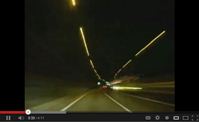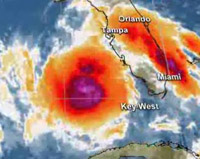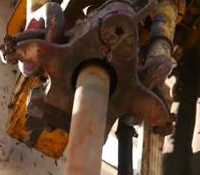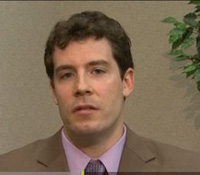
Each year, the world produces 4 billion tonnes of waste - only one-quarter of this is recycled or recovered. Find out more from this video about the challenges Veolia Environmental Services faces worldwide.
Sponsored by Veolia Water Solutions & Technologies

E3 is a framework through which local communities connect local manufacturers with the best technical assistance available. Each community is supported by a coalition of federal agencies that have joined forces to form E3. E3 combines the strengths of federal, state, and local resources to promote sustainable manufacturing and economic growth throughout the United States. In rural communities across North Carolina, E3 is helping local manufacturers reduce costs, cut wastes, and be more competitive.

Various Honeywell executives and workers comment about the company's commitment to sustainable opportunity.

Researchers at GE Global Research have achieved a first step in reducing the cost of clean fuel, zero emission buses, with a vehicle powered by GE's new Durathon™ battery in tandem with a lithium battery and a hydrogen fuel cell. This promising development of a new energy management system could help accelerate both fuel cell acceptance and electrification of bus fleets, delivery trucks, and other larger, heavy-duty vehicle fleets, enabling clean vehicle technologies. In this video, GE engineer Tim Richter explains how the company's Durathon batteries fit into the on-board energy management system. He also takes us on a drive to see the bus in action.

Ace Home Expert Lou Manfredini shares helpful tips on how to make your home more energy efficient in this video posted by Ace Hardware.

This EPA video posted in September 2012 says there are approximately 800 cities and towns across the country that still rely on combined sewer systems. These systems increasingly put clean water at risk because of combined sewer overflows during heavy rain storms. EPA hydrologist Dr. Bill Shuster has been testing and evaluating environmentally friendly storm water management techniques called green infrastructure -- including rain gardens, cisterns and rain barrels -- to reduce overflows. His research is gaining momentum around the country because cities and towns save money while protecting human and environmental health.

This video posted to YouTube by the U.S. Department of Agriculture on Oct. 4, 2012, shows how USDA officials are helping ranchers in Texas learn to keep some green on their land, even during a drought.

Marathon Oil's Eagle Ford Asset Manager Kirk Spilman highlights the Company's activity in this important liquids-rich play, and the opportunity for continued growth. Marathon has Eagle Ford offices in San Antonio, Kenedy, Pleasanton, and Gonzales.

Geologists have long known about huge natural gas deposits trapped in shale rock formations, but it is only over the past decade that energy companies have combined two established technologies to unlock this resource. See how Chevron uses horizontal drilling and hydraulic fracturing to safely produce natural gas from shale.

This August 2012 video from Waste Management explains to residential customers how to make the automated collection of trash and recyclables efficient. It's a quick guide to placing WM containers at the curb.

This August 2012 U.S. Department of Energy video provides an overview of the concept behind The Solarize Guidebook, which offers neighborhoods a plan for getting volume discounts when making group purchases of rooftop solar energy systems.

Residents in unprotected, low-lying areas outside New Orleans were evacuating Monday as Tropical Storm Isaac threatened to strengthen into a hurricane that could make landfall in or near Louisiana almost seven years to the day after Hurricane Katrina struck.

Two years ago, the U.S imported two-thirds of its oil. Now, imports are less than half of U.S. oil needs. Jeffrey Brown talks to National Resources Defense Council's Kate Sinding and the Manhattan Institute's Robert Bryce about increased domestic energy production and whether economic benefits outweigh environmental concerns.

CNBC's Jane Wells reports on the most recent crop report from the USDA and gives a look at the extended impact of the Midwestern drought on hog farmers and cattle ranchers.

The drought gripping the Midwest is affecting 88 percent of the country's corn crop and will send food prices up next year, according to a report released Wednesday by the U.S. Department of Agriculture.